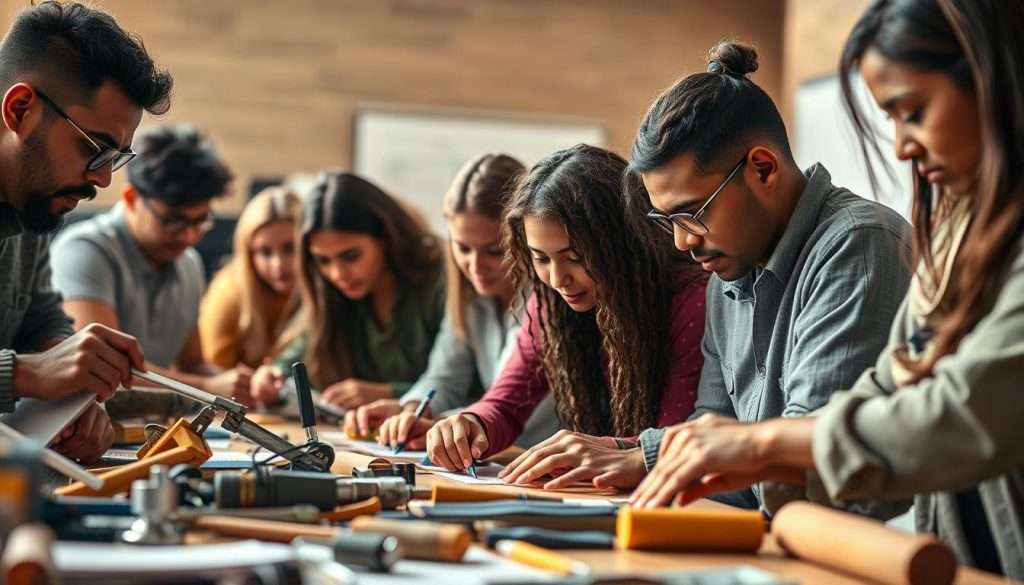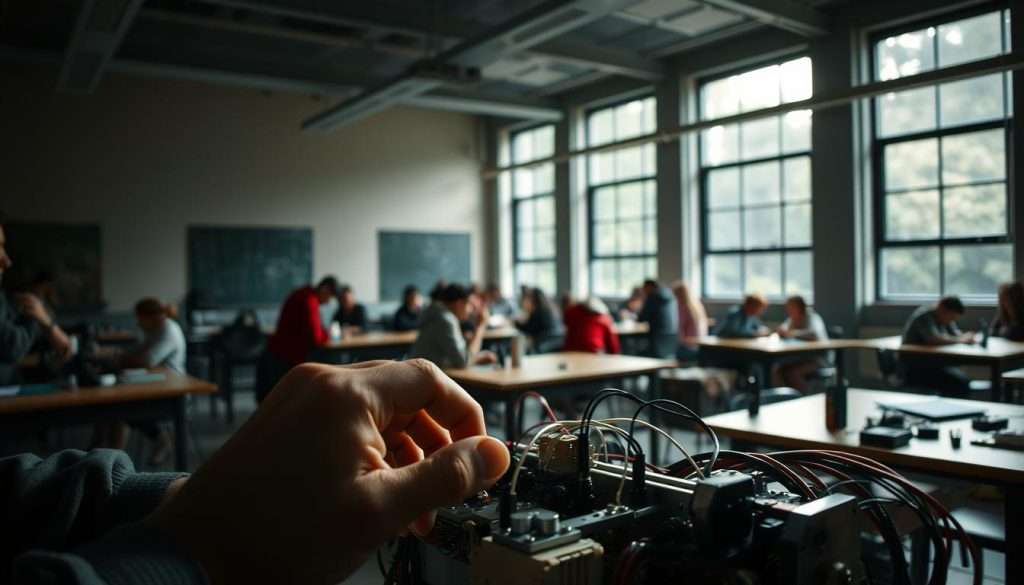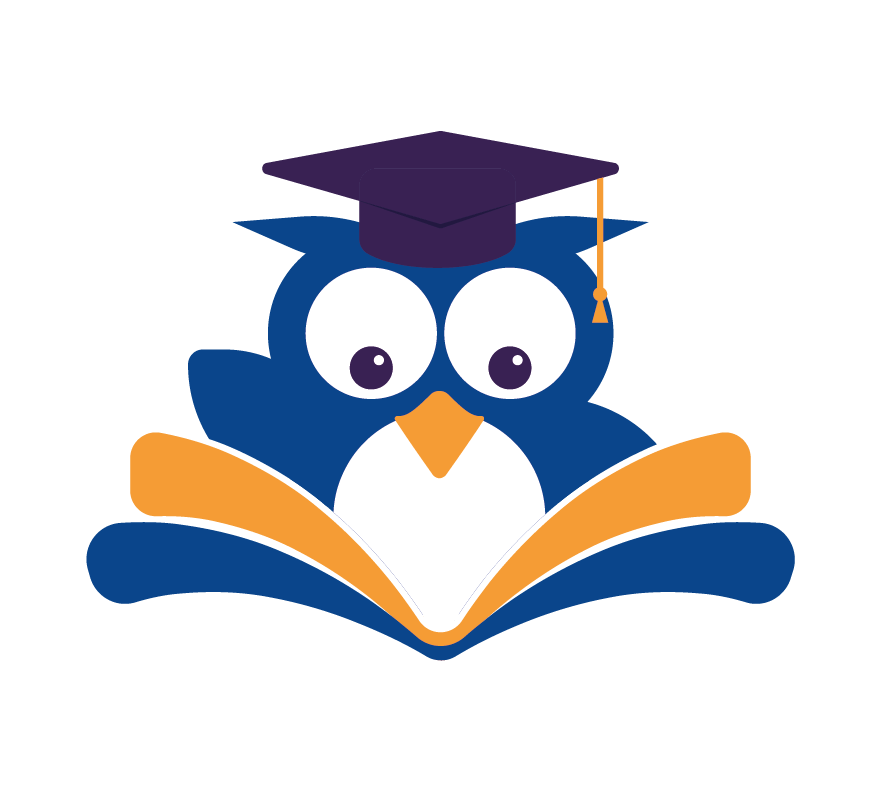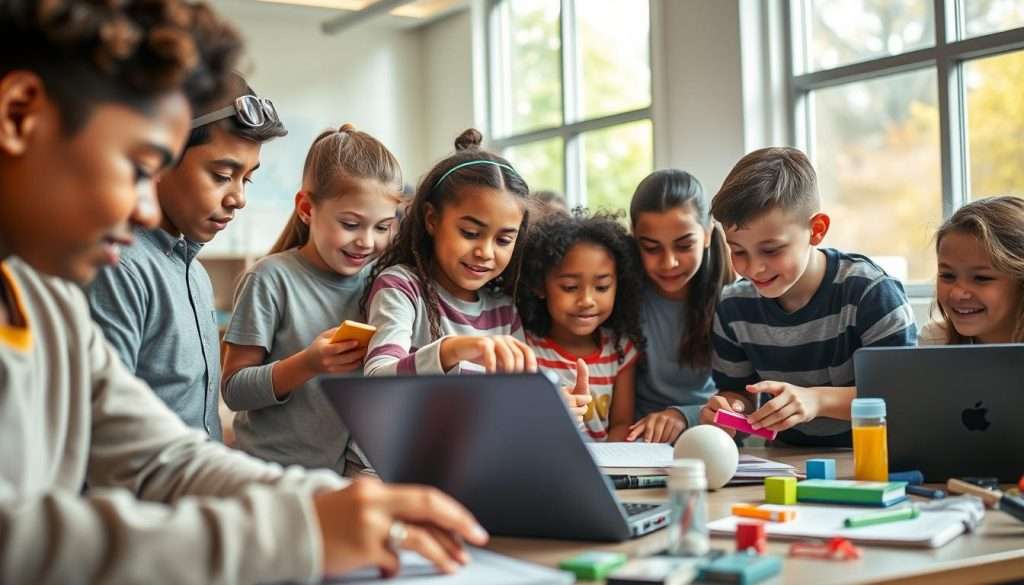Imagine turning studying into something fun and effective! At The Knowledge Pod, Dr. Zam’s new way of learning is changing everything. With hands-on learning, you can reach your highest potential and grow in many ways.
Old learning methods don’t cut it in today’s fast world. That’s why learning by doing is so powerful. It lets you use what you learn in real life. This way, you understand things better and remember them longer.
Key Takeaways
- Transform studying into an enjoyable experience
- Unlock your full potential with hands-on learning
- Achieve personal and professional growth
- Develop a deeper understanding through practical application
- Improve retention with real-world scenarios
The Science and Psychology Behind Active Learning
Learning isn’t just about listening. It’s about doing. Active learning is more than a method. It’s a science-backed way that uses how our brains learn.
How Your Brain Processes Experiential Knowledge
Experiential learning uses many senses. This makes it easier for your brain to remember. When you’re actively learning, you’re not just getting information. You’re making connections between different pieces of info.
This experiential knowledge stays in your long-term memory. It’s easier to remember later.
Why Traditional Learning Often Falls Short
Traditional learning focuses on just listening. This can lead to a shallow understanding. On the other hand, active learning makes you participate and explore. This leads to a deeper understanding.
By adding practical learning, you can go beyond traditional learning. You’ll understand the subject much better.
The “Learning by Doing” Methodology Explained
The “learning by doing” method puts hands-on experience at its core. It believes that doing things is the best way to learn and remember.
Core Principles That Drive Experiential Education
This method has key principles that make it work. Active participation is key, letting learners dive into the subject. Experiential learning is also important, where learners use what they know in real life.
Our courses at the Knowledge Pod™ follow these principles. We aim to grow the mind, body, and soul. We mix physical activity, mental challenges, and emotional growth for a complete learning experience.
| Core Principle | Description | Benefit |
|---|---|---|
| Active Participation | Direct engagement with subject matter | Enhanced understanding and retention |
| Experiential Learning | Applying theoretical knowledge in real-world contexts | Practical skills development |
| Holistic Approach | Integration of physical, mental, and emotional learning | Well-rounded development |
Real-World Success Stories and Case Studies
Many success stories show the “learning by doing” method works. For example, a study found that hands-on activities boost understanding and retention of tough topics.
Through learning through practice and interactive experiences, people achieve great things. At the Knowledge Pod™, we’ve seen learners grow their skills and confidence through our programs.
7 Proven Benefits of Hands-On Learning Approaches
Hands-on learning offers many benefits, backed by science. It changes the way we learn for the better.
Enhanced Retention and Long-Term Memory
Studies show that active learning improves memory more than just sitting and listening. When you’re part of the learning, you remember more for longer.
Accelerated Skill Development
Hands-on learning helps you learn skills fast. It lets you use what you learn in real life. This makes learning faster and more effective.
Increased Motivation and Engagement
Doing things while learning makes it more exciting. Being involved keeps you interested and motivated. This is key to success in learning.
Hands-on learning brings these benefits and more. It makes learning more fun and effective.
How to Create Your Personal Learning-by-Doing Plan
Creating a personal learning plan is a big step for anyone wanting to boost their learning. It lets you tailor your learning to fit your needs and goals. This way, you can make the most of hands-on learning.
Identifying Your Learning Style and Goals
First, figure out how you learn best. Are you a visual, auditory, or kinesthetic learner? Knowing this helps you create a plan that uses your strengths. Set goals that match your learning style, like speaking a new language for 10 minutes in three months.
Designing Practical Exercises for Any Subject
Use movement to boost your learning. Try hands-on activities, build models, or create physical examples of ideas. For example, making a 3D model of the human body can help when studying anatomy. The goal is to make learning active, not passive. Try different methods to see what works best for you.

Building a Sustainable Practice Schedule
Being consistent is crucial for learning. Create a schedule that fits your life, setting aside time each day or week for learning. Start small and grow your time and effort as you get more comfortable. Use project management apps or planners to stay organized.
By following these steps, you can craft a learning plan that improves your experience. It makes learning more fun and effective.
Transforming Theory into Practice: A Step-by-Step Guide
The journey from theory to practice is about trying and thinking. It’s how we turn ideas into skills we can use. This journey is key to making knowledge useful.
The Implementation Process
We follow a 5-stage process to make theory real. This process helps us learn by doing. It makes learning fun and interactive.
Stage 1: Research and Observation
First, we do lots of research and watch how things are done. We learn from others and see how theories work in the real world.
Stage 2: Structured Experimentation
Next, we try things out ourselves. We test our ideas and see if they work. This is where we learn by doing.
Stage 3: Reflection and Analysis
Then, we think about what we found out. We look at our results and figure out what we did right or wrong. This helps us learn more.
Stage 4: Refinement and Adaptation
After that, we make our plans better. We adjust our methods to reach our goals. This is where we get better at what we do.
Balancing Instruction with Independent Discovery
Finding the right mix between teaching and exploring is important. Teaching gives us a base, but learning by doing makes us grow. This balance lets us try new things and learn in a fun way.
“The mind is not a vessel to be filled, but a fire to be kindled.” This quote shows how important it is to spark curiosity and let people learn on their own.
By following these steps and valuing learn through practice, we get a rich and engaging learning experience. It connects theory and practice in a meaningful way.
Practical Applications of Learning by Doing in Different Fields
Learning by doing is more than a method; it’s a way to apply knowledge in many fields. It shows how hands-on learning fits into various interests and careers.
For Academic Subjects: Math, Science, and Languages
In school, “Learning by Doing” changes how students tackle tough subjects. Math problems become real-life tasks, like planning a school event budget. Science experiments, like making a volcano or growing crystals, make hard ideas easy to see.
Learning a language becomes more fun with role-playing, debates, and stories.
Example: A language class might cook a meal together. Students use recipes in the target language, improving their vocabulary and understanding.
For Creative Pursuits: Art, Music, and Writing
For creatives, “Learning by Doing” is very empowering. Artists improve through workshops and real projects. Musicians learn in jam sessions or by writing their own music. Writers get better through writing sprints, workshops, and feedback.
“The way to get started is to quit talking and begin doing.” – Walt Disney
For Professional Skills: Leadership, Communication, and Technical Abilities
In work, “Learning by Doing” helps grow leadership, communication, and technical skills. It means joining project teams, going to workshops, or tackling new tasks. For tech skills, hands-on training with new tools and software is key.
| Skill Area | Practical Learning Activities |
|---|---|
| Leadership | Mentoring, leading projects, team management |
| Communication | Presentations, role-playing, group discussions |
| Technical Abilities | Software training, coding challenges, DIY projects |
By using “Learning by Doing,” people can learn faster. This is true for school subjects, creative fields, or professional growth.
Digital Tools That Enhance Experiential Learning
Digital tools are changing how we learn, making it more fun and effective. Now, learners can dive into interactive and immersive experiences that were once impossible.
Interactive Platforms and Virtual Simulations
Interactive platforms and virtual simulations lead the way in active learning. They offer a safe space to try out ideas without risk. For example, virtual labs let students do experiments that are too expensive or risky in real life.
Project Management Apps for Learning Journeys
Project management apps make learning better by organizing tasks and tracking progress. Tools like Trello or Asana help learners set goals and deadlines. This improves time management and organizational skills.
| Tool | Feature | Benefit |
|---|---|---|
| Trello | Boards, Lists, Cards | Organizes tasks visually |
| Asana | Workspaces, Tasks, Projects | Enhances team collaboration |
Community Resources for Collaborative Practice
Connecting with community resources is key for interactive learning. Online forums, social media groups, and platforms like GitHub or Behance are great for sharing work and getting feedback. The Knowledge Pod™ also has many resources to help you grow.
By using these digital tools, learners can create a dynamic experiential learning space. It’s both fun and effective.
Overcoming Common Obstacles in the Learning Process
When you learn practically, you might face some challenges. These can actually help you learn more. It’s key to tackle these obstacles head-on.

Turning Failures into Valuable Feedback
Failures are a normal part of learning. Instead of getting down, see failures as chances to learn and grow. By figuring out what went wrong, you can get better. This way, you build resilience and a growth mindset, which are key for practical learning.
Strategies for When You Hit a Plateau
Reaching a plateau can be tough. But, it’s a common part of learning. To get past it, try something new or take a break. Getting feedback or changing your goals can also help keep you motivated.
Finding Time and Resources for Practice
Finding time and resources to practice can be hard. To solve this, make learning a priority and set aside time for it. Using digital tools and community resources can also help make learning more efficient.
By tackling these common obstacles, you can keep moving forward. You’ll enjoy the benefits of “learn through practice” and hands-on learning.
Measuring and Celebrating Your Progress
Measuring progress is key in the “learning by doing” method. As you dive into experiential learning, tracking your growth is crucial. It helps you see how far you’ve come and what you still need to work on.
To measure your progress well, you need clear benchmarks. This is where meaningful milestones play a big role.
Creating Meaningful Benchmarks and Milestones
Benchmarks and milestones mark your progress. By setting specific, achievable goals, you can see your growth clearly. For example, if you’re learning a new language, milestones might include a 10-minute conversation or reading a book on your own.
Documentation Methods: Journals, Portfolios, and Videos
Recording your learning journey is powerful. You can use journals for thoughts, portfolios for your work, or videos to show your skills. For instance, if you’re learning a craft, a video of your process can be great for your portfolio.
| Method | Description | Benefits |
|---|---|---|
| Journals | Record thoughts and insights | Enhances reflection, tracks thought process |
| Portfolios | Showcase work and projects | Demonstrates skill development, tangible evidence |
| Videos | Record skill demonstrations | Visual proof of progress, versatile sharing |
The Power of Reflection in Skill Development
Reflection is vital in learning. It helps you see where you need to get better and solidify your knowledge. By documenting and reflecting, you can celebrate your achievements and stay motivated.
Conclusion: Embracing Lifelong Growth Through Action
Our journey through “learning by doing” shows it’s a game-changer. It helps you develop practical skills and think critically. By diving into hands-on learning, you gain more than just knowledge. You also develop a mindset that loves to experiment and be creative.
Practical learning means taking action, making mistakes, and learning from them. It’s a way to grow both personally and professionally. Remember, every experience, good or bad, helps you move closer to your goals.
So, what’s next? Keep exploring what’s possible with learning by doing. Stay curious and keep practicing. This approach will change your life for the better. By using this method, you’ll grow for life and reach your full potential.

